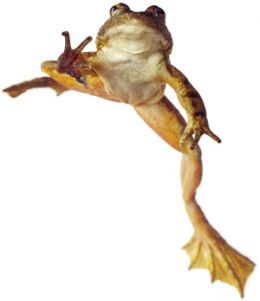Environmental contaminants and disease may synergistically contribute to amphibian population declines. Sub-lethal levels of contaminants can suppress amphibian immune defenses and, thereby, may facilitate disease outbreaks. We conducted laboratory experiments on newly metamorphosed foothill yellow-legged frogs (Rana boylii) to determine whether sublethal exposure to the pesticide carbaryl would increase susceptibility to the pathogenic chytrid fungus Batrachochytrium dendrobatidis that is widely associated with amphibian declines. We examined the effect of carbaryl alone, chytrid alone, and interactions of the two on individual survival, growth, and antimicrobial skin defenses.
We found no effect of chytrid, carbaryl, or their interaction on survival. However, chytrid infection reduced growth by approximately one-half. This is the first report of suppressed growth in post-metamorphic amphibians due to infection with chytrid. Rana boylii skin peptides strongly inhibited chytrid growth in vitro, which may explain why chytrid exposure did not result in significant mortality. Skin peptide defenses were significantly reduced after exposure to carbaryl suggesting that pesticides may inhibit this innate immune defense and increase susceptibility to disease.
Source:
C Davidson et al (2007) Environ. Sci. Technol. 41, 1771-1776 (attached)

- Login om te reageren
